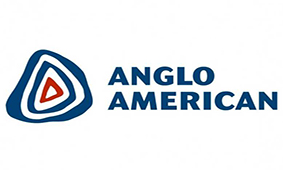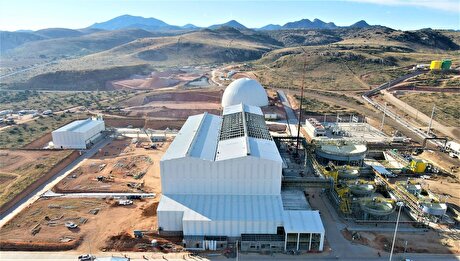
Anglo ending 2018 on high note, predicts higher output, lower costs


“We are also confident about the outlook, with production expected to increase by 3% in 2019, with cost inflation fully absorbed by our productivity and cost improvements,” chief executive Mark Cutifani in a briefing for analysts and investors.
Cutifani noted that the company, which has mining operations in Southern Africa, North and South America and Australia, forecasts a further 5% production increase in both 2020 and 2021.
The flagged output increases won’t come for free for the world's number four diversified miner. Completed and planned expansions at some of its mines, particularly aging copper operations in Chile, means the company expects total capital expenditure to average between $2.8 billion and $3.1 billion sometime after 2021.
After reducing net debt by more than $9 billion over the last three years, Anglo American will now drive enhanced returns through capital allocation options, Cutifani said. The company, however, remains the only one of the top diversified miners not to have launched a share buyback program yet.
“We have a well sequenced range of high returning, quick payback growth options, from life extensions in diamonds and metallurgical coal, to growth across our copper, diamonds and met coal businesses in particular”, the executive said.
The new production figures didn’t come as a total surprise to investors. In October, the company had raised its platinum and palladium targets for 2019. And last month, it increased its 2018 copper guidance from its Chilean operations to 660,000 tonnes, up from a range of 630,000 to 660,000 tonnes previously anticipated.
Anglo also said its Minas-Rio iron ore mine in Brazil should resume operations before the end of the year, producing between 16 million tonnes and 19 million tonnes in 2019.
The company halted production at the mine, its biggest development project, after two leaks in March affected a pipeline that carries the ore to port in Rio de Janeiro state for export. The impact of those incidents in the company's earnings are estimated to be between $300 and $400 million.


Trump weighs using $2 billion in CHIPS Act funding for critical minerals

Electra converts debt, launches $30M raise to jumpstart stalled cobalt refinery

Codelco cuts 2025 copper forecast after El Teniente mine collapse

Barrick’s Reko Diq in line for $410M ADB backing

Abcourt readies Sleeping Giant mill to pour first gold since 2014

SQM boosts lithium supply plans as prices flick higher

Nevada army depot to serve as base for first US strategic minerals stockpile

Pan American locks in $2.1B takeover of MAG Silver

Viridis unveils 200Mt initial reserve for Brazil rare earth project

Kyrgyzstan kicks off underground gold mining at Kumtor

Kyrgyzstan kicks off underground gold mining at Kumtor

KoBold Metals granted lithium exploration rights in Congo

Freeport Indonesia to wrap up Gresik plant repairs by early September

Energy Fuels soars on Vulcan Elements partnership

Northern Dynasty sticks to proposal in battle to lift Pebble mine veto

Giustra-backed mining firm teams up with informal miners in Colombia

Critical Metals signs agreement to supply rare earth to US government-funded facility

China extends rare earth controls to imported material

Galan Lithium proceeds with $13M financing for Argentina project

Kyrgyzstan kicks off underground gold mining at Kumtor

Freeport Indonesia to wrap up Gresik plant repairs by early September

Energy Fuels soars on Vulcan Elements partnership

Northern Dynasty sticks to proposal in battle to lift Pebble mine veto

Giustra-backed mining firm teams up with informal miners in Colombia

Critical Metals signs agreement to supply rare earth to US government-funded facility

China extends rare earth controls to imported material

Galan Lithium proceeds with $13M financing for Argentina project

Silver price touches $39 as market weighs rate cut outlook

















